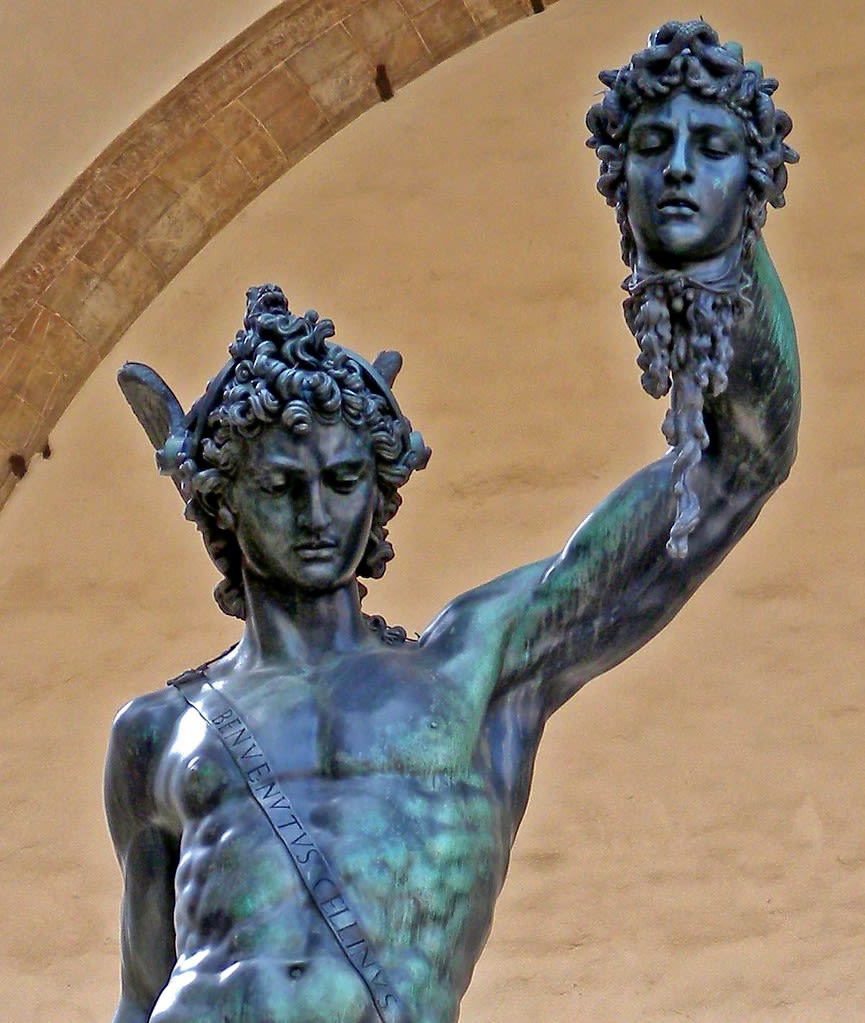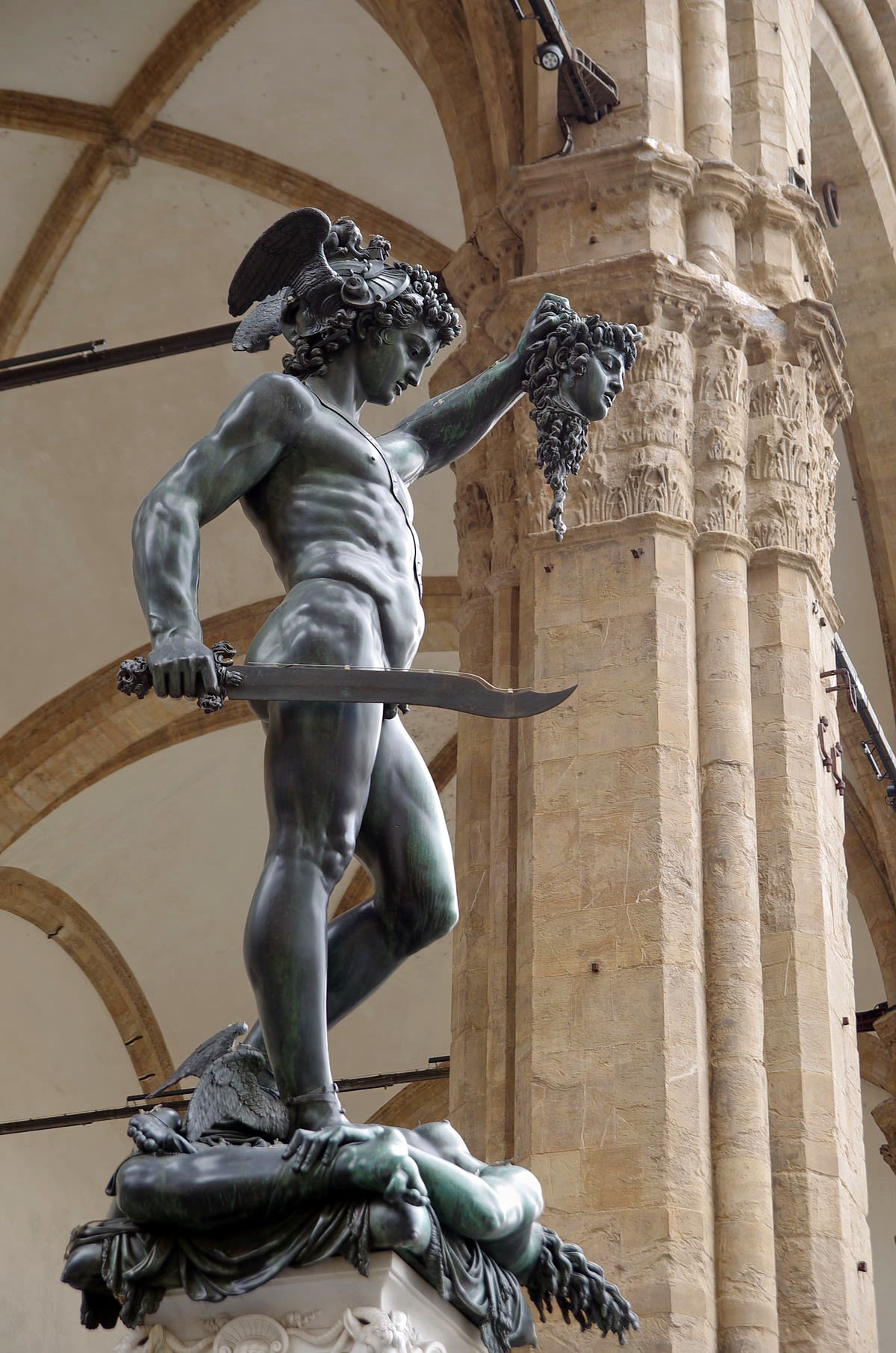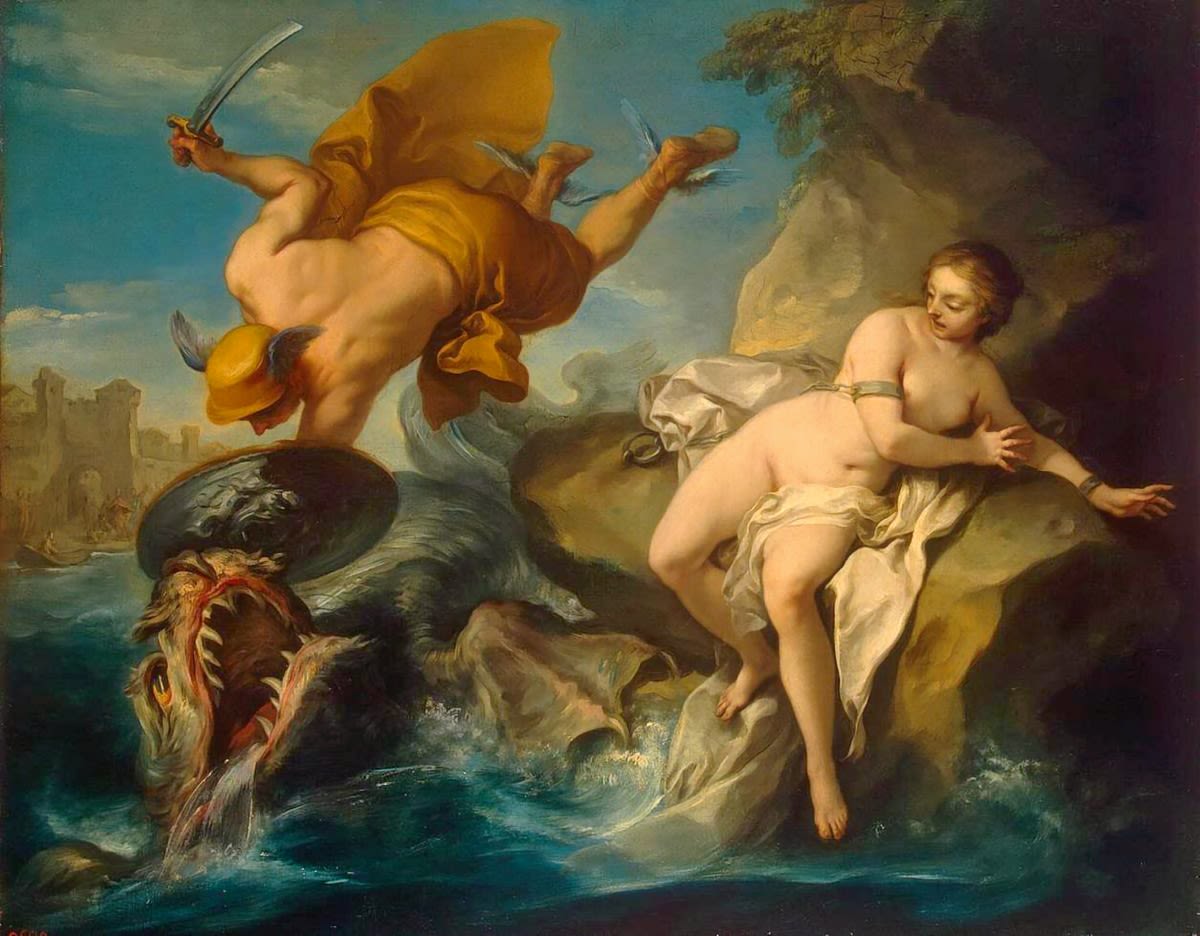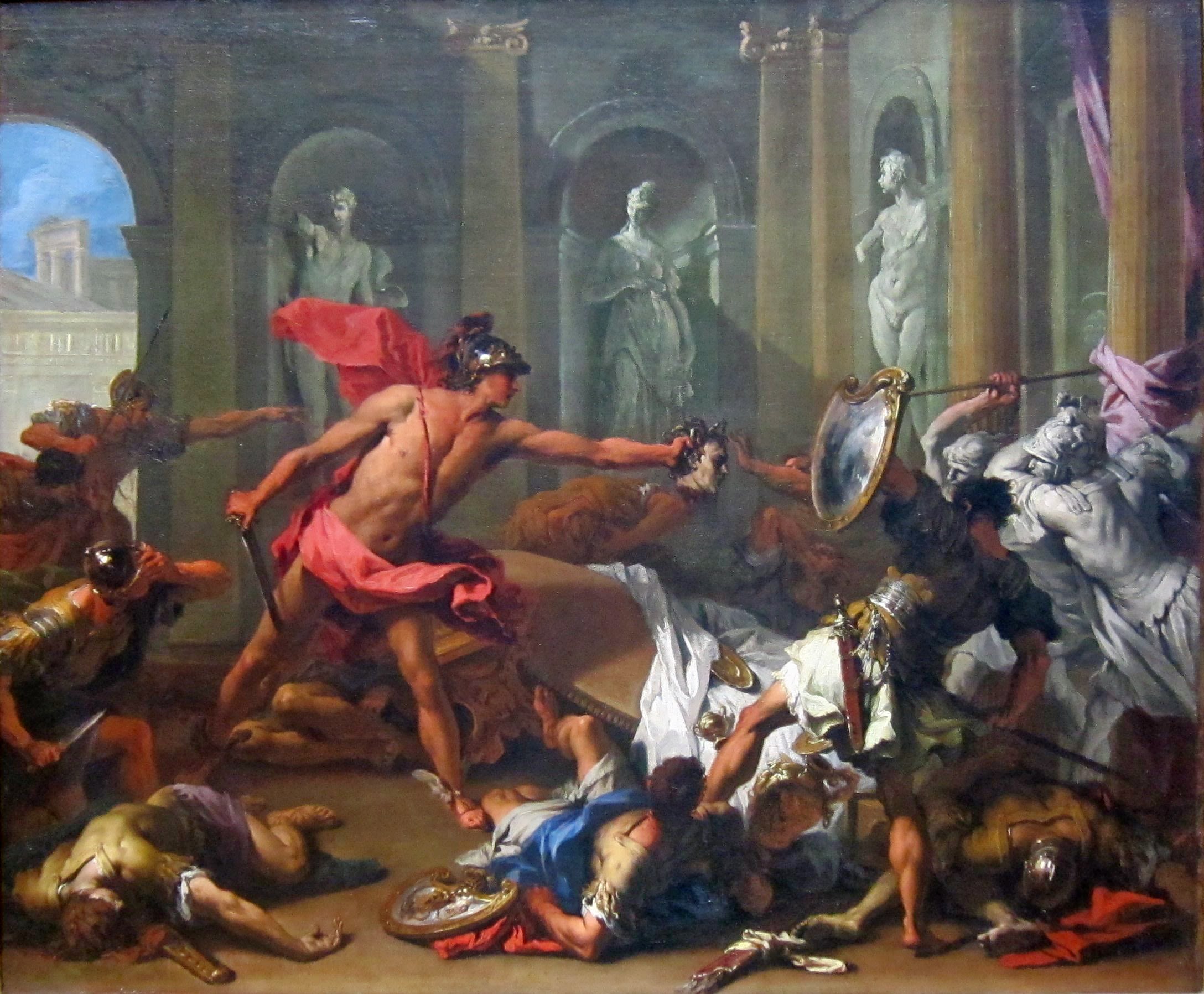Perseus with the Head of Medusa
And the body beneath his feet

The name of one of Greek mythology's most infamous female characters usually calls to mind several images: snakes, stone, and death.
All three of these concepts are immortalized in Italian Renaissance artist Benvenuto Cellini's bronze statue, Perseus with the Head of Medusa, still on display in the Piazza della Signoria in Florence, Italy.
Appreciation and understanding for this work of art's significance require context of the ancient legend that served as Cellini's inspiration.
Andromeda: The Damsel in Distress
Like most stories, this legend circulates around love. But there are evil kings, bloodthirsty sea monsters, and quite a bit of violence along the way. The story escalates pretty quickly.
Let's rewind a bit -- Perseus was the hero of his age and time. Being the child of Zeus and a mortal princess, Danae, requires fulfilling a grand destiny. Fulfilling a grand destiny also means facing several enemies.
One such enemy was Polydectes, a selfish king intent on marrying Perseus' mother who had no interest in this ruler. In an effort to get her son out of the way, Polydectes sent Perseus on a quest he didn't expect him to return from -- but the gods-blessed hero prevailed.
It was on this quest that Perseus rescued Andromeda from the sea monster Cetus, falling in love with her great beauty. Perseus happened to be on his way back from murdering Medusa, riding Pegasus (a gift from Athena) with Medusa's head in tow. Perseus eventually used Medusa's lifeless eyes to turn one of Andromeda's admirers to stone.
It is this particular image Cellini sought to capture in bronze.
Perseus and Andromeda eventually married, had eight children, and are said to have ruled over Mycenae. Their ending is a happy one, and one that a Renaissance artist like Cellini would have reason to use as his muse.
Medusa: The Cursed and Slaughtered
But take a closer look at Cellini's finished product.
Behold the clearly powerful warrior Perseus, wearing an enchanted helmet from Hades.
Observe the sword in his right hand and a face void of any distinguishable emotion.
Then look at his pair of winged sandals, gifted from Hermes. See the decapitated body lying atop the statue's base.
This is the body of Medusa, gore visibly spilling from her throat.
It's important to note the statue's relief panels. Relief panels are derived from a sculpting technique that makes a two-dimensional background appear three-dimensional. This statue's relief panels (on all four sides of the base) tell the story of how Perseus rescued Andromeda. In other words, it's showing viewers how Perseus came to be standing triumphant over the slain body of yet another enemy.
In other words, Medusa is a sacrifice.
For Perseus' love at first sight.
For Andromeda's life.
For the sake of life to go on.
Looking at how this one piece of art fits into the entire city of Florence helps to create a larger idea of just how art-centered the culture and continued Renaissance influences are.
Picture creds: This is Italy
Here is the Piazza della Signoria. This ever-bustling corner of Florence is home to not only Cellini's sculpture in the Loggia dei Lanzi, but the city's town hall and former Medici family residence, Palazzo Vecchio, pictured as the large building with a tall spire. The twin corridors to the right of the building are the current Uffizi Gallery, one of the most visited art museums in the entire world.
Florence's Santa Maria del Fiore Cathedral, or Duomo, is perhaps the most anticipated tourist spot -- though David gives it a run for its money. The cathedral is a work of art in and of itself, taking nearly 140 years to complete and decorated with pink, green, and white marble materials to reflect the Italian flag.
Across the Arno via the Ponte Vecchio bridge is the Piazza de' Pitti, one of the largest former palaces in Florence and, currently, a museum divided into 5 different parts. The Medici family's famous Boboli Gardens sit right behind the massive structure. Open to the public, they're an early example of the popular and influential Italian garden style.
Role Reversal
Florence's overwhelming amount of preserved art has served as inspiration for artists around the world, specifically those seeking to further the stories of ancient myths. The details of Medusa's entire story are vast and complex. From the reason why she was originally cursed to her island banishment and eventual place of death, there's a plethora of content. For the sake of Cellini's art, Perseus is given the limelight. Other artists and authors have chosen to portray the misunderstood character of Medusa in a favorable light, reversing roles to make this female figure the main character.
Luciano Garbati's "Medusa With the Head of Perseus"
The receiver of praise as well as backlash in light of the recent "#MeToo" movement, this statue was erected in Lower Manhattan after its creation in 2008. Garbati expressed in a New York Times article that he was "honored by the fact that the sculpture has been chosen as a symbol,” and made aware of how his art is a “product of a patriarchal society."
Standing among other works of sculpted art in a corner of the Renaissance's birthplace, the bronze detailing of Cellini's crowning glory will continue to turn heads (it stands in the center of this painting of 16th-century Piazza della Signoria). Even the head of a copy of Michelangelo's David stares into the eyes of Medusa on the left.
I took this photo on my last night of living and studying abroad in Florence. I knew nothing about its history but was initially drawn to the decapitated head's familiar mane of snakes. I stared at the gruesome sight, all sorts of tourists and locals shuffling around me, and felt there had to be more than met my eye.
There certainly was more. There is still more to learn and understand.
Perseus still stands.
Medusa's body still lies.
But life and music and art and humanity flourish under the towering forms of statues like this, in cities like Florence and beyond.
Myth, in all its carefully curated narratives, lives on.
But art will keep speaking to today's creatives, those people searching for stories to tell and portray in the loveliest of ways.
Myth, in all its carefully curated narratives, lives on.



